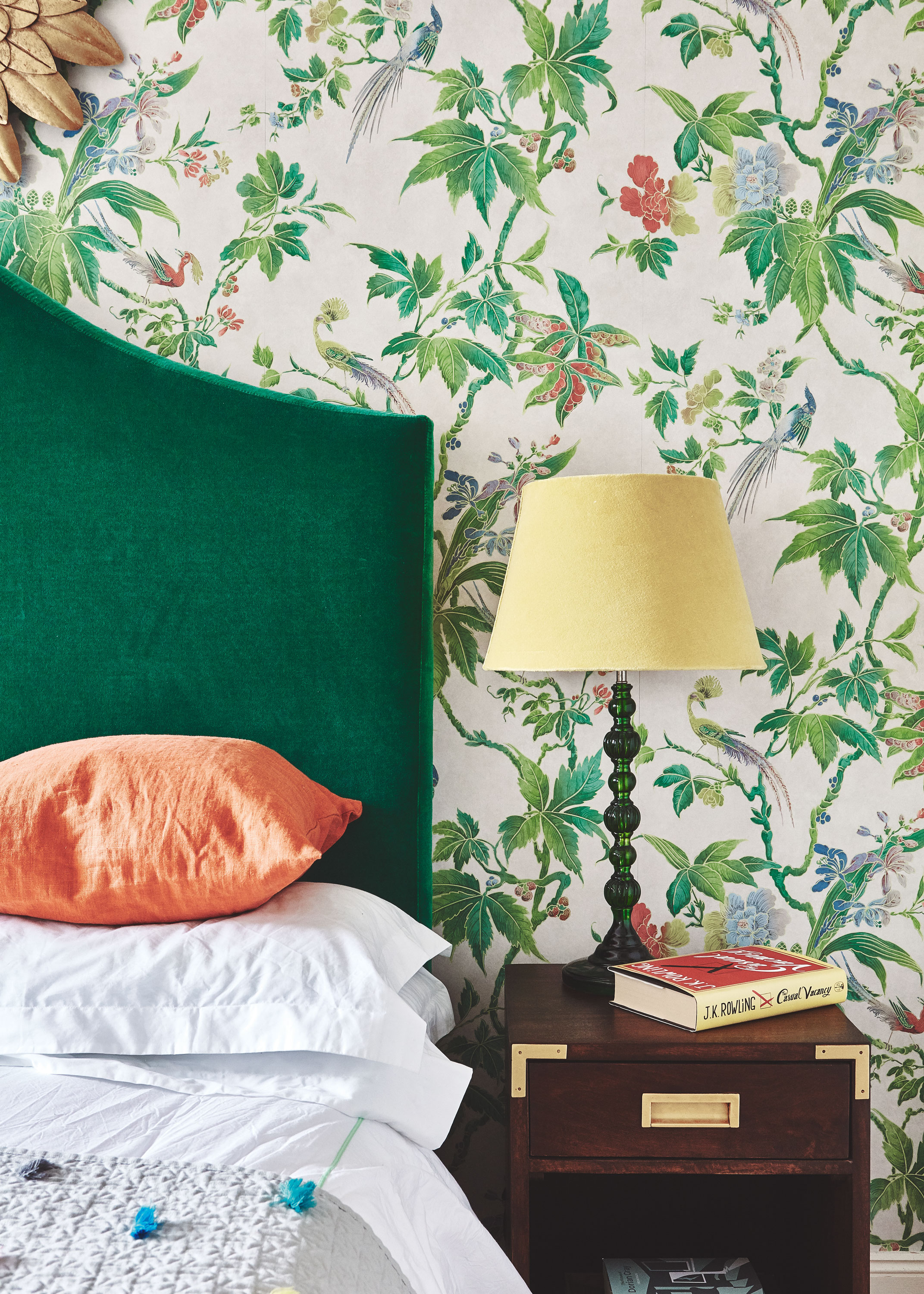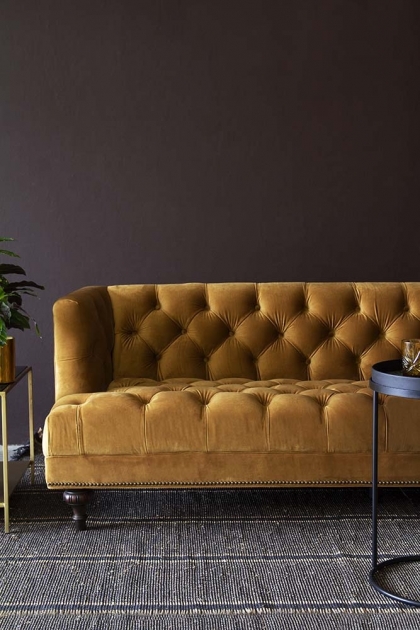How to clean upholstery – 3 steps to care for chairs and more furniture fabrics yourself
Cleaning upholstery in the home is easily done. Tend to fabric sofas, velvet chairs, cushions and more yourself with our simple and specialist guide


Cleaning upholstery hopefully isn't something you'll have to tackle often. But if you've just invested in one of the best sofas on the Real Homes team's radar and want to keep it looking pristine, or you've inherited some hand-me-down upholstery in need of some TLC, it's always useful to know how to keep your furniture in tip-top condition.
Whether you're tackling a vintage armchair, a headboard, couch or your upholstered car seats, this step-by-step guide will cover the basics of cleaning the fabric on these items, quickly and effectively using the likes of vinegar, baking soda, oh, and your vacuum!
And if the fabric in question requires a little more whammy, our tried and tested guide to the best upholstery cleaners could help.
- Deep cleaning a couch in particular? We can help.

How to clean upholstery yourself
We spoke with the head of creative at Swyft, Kelly Collins, to find out how to tackle upholstery at home solo and successfully. To be clear dear readers, when we talk about cleaning upholstery, we're talking about any fixed or loose fabric covers.
The rules are mostly the same for cleaning each piece of furniture, although the way you go about it also depends on the fabric – cotton, velvet, linen, leather and so on – so we would always advise that you check the manufacturer's care label before you start and that you spot test your cleaner of choice on an unseen part of the furniture (the back of a chair, for example) to ensure any steps you take won't cause damage.
This particularly applies to velvet and silk, so be sure to follow our advice and if in doubt, you can contact a professional cleaner.
- Find the best upholstery cleaners in our guide.

1. Vacuum upholstery to remove dust and debris
You should actually be doing this once a week as it will make life much easier if you keep your upholstery dust- and grime-free. Collins notes 'Hoovering your upholstery often also prevents any smaller particles embedding themselves into the weave making it much more difficult to remove.'
Get small space home decor ideas, celeb inspiration, DIY tips and more, straight to your inbox!
First remove any loose throw cushions, take them outside and give them a gentle bashing to knock out the dust. Then using the upholstery attachment, vacuum all the visible parts of the sofa seat and back cushions with a slow sweeping movement, working left-to-right, using the upholstery attachment on fabric sofas, and the brush attachment on leather sofas to avoid scratching them. If you're working with silk or linen then set the suction to low.
Remove the vacuumed chair/sofa back and seat cushions if possible, put them face down on to a clean floor and vacuum their undersides. Next, vacuum the visible parts of the furniture itself with the upholstery attachment. Then swap to the crevice tool to get down into any corners, near the seams, tufting and button nooks.
Top tip: Avoid sucking up coins by covering the crevice nozzle and/or cover the end with some old panty hose secured with a rubber band.
- These are the best vacuum cleaners for the job.
2. Spot clean upholstery stains
Once you've vacuumed up any removable debris, try these easy spot stain removal methods – still checking the label – depending on the fabric you're working with. Always dab and never rub hard when cleaning upholstery since it can push the dirt deeper and distort the fabric.
Spot cleaning velvet upholstery
For velvet, Collins recommends 'For tackling stains, you want to try to remove any residue first using a teaspoon. If the fabric has a guard treatment and it just needs a wipe down, give it a hoover first to remove any dust and other particles that might have collected. Then, you can either use warm water with a white microfiber cloth or – if you are needing something a little stronger – use a white or clear household soap. Always leave to air dry as applying any heat can damage the fabric.'
Spot cleaning linen upholstery
Start by pulling up residue with a teaspoon again, then Collins says 'You’ll need to grab a clean, damp cloth and gently dab at the stain to lift it. A bit of patience may be required as the dabbing process could take a while depending on how big or dark the stain is. But, one thing you must never do is aggressively rub the stain with a damp cloth as this will only embed the stain further into the linen. For more stubborn stains and spills on linen, you’ll most likely need to use a mild soap or detergent to help. Again, dab at the stain with a clean cloth and eventually it’ll start to lift.'
Spot cleaning upholstery with baking soda
We swear by baking or bicarbonate of soda to refresh our fabric upholstery. 'Bicarbonate of soda is also a handy option to remove stains from linen. Simply sprinkle some onto the stain, leave it for a few minutes to work its magic, hoover it up and gently dab it until it’s gone. Once the stain has been removed, leave the sofa to air dry' advises Collins.
Spot cleaning upholstery with baby wipes
Choose the gentlest baby wipes you can find and carefully dab at whatever's found its way on to your upholstery. This should work for baby sick, chocolate and grimy fingerprints.
Spot cleaning with upholstery wipes
No baby wipes handy? Stock up on upholstery wipes to always have an emergency upholstery stain treatment on hand. Again, wipe gently and pick one that suits your upholstery's material.
Remove stains on children’s car seats with rubbing alcohol
A cool and quick hack from Ocean Free, 'According to a survey by a vehicle leasing company, 44% of parents clean their children’s car seat twice a year. Prevent a breeding ground for germs, viruses and bacteria to spread by wiping regularly with hand sanitiser and a clean cloth.' Try rubbing a small amount over the stained area using a clean microfibre cloth and watch the stain lift as you sanitize the area too.
- For more stain removal techniques take a look at our guide.
3. Deep clean your upholstery
Vacuuming? Done. Stain spot treatments? Done. Now onto the sudsing!
How to clean upholstery with laundry detergent
Take upholstery and lukewarm water (liquid detergent is better than powder which needs water at a higher temperature to dissolve and can leave smudges and light spots behind). Then, simply use a clean, microfibre cloth (every home should have some) and gently wipe over the upholstery. Leave to dry before sitting on or touching the upholstery again.
How to clean upholstery with vinegar
Mix half a cup warm water with an equal amount of white vinegar. Dampen a microfibre cloth with the solution and blot at stains.
Next, mix a mild washing up liquid like Dawn in with some warm water and blot again with a clean cloth. Use clean water and another clean cloth to rinse and remove any soapy residue. Leave to dry.
How to clean upholstery in a washing machine
If you can remove your upholstery covers and the care label says you can put them in the washing machine, vacuum first, then go ahead, following the care instructions to the letter. Remember that putting them on a wash that's too hot is likely to lead to shrinkage, which means you will have great difficulty getting them back on the furniture. So, if in doubt, choose a delicate, cool wash and don't tumble dry.
Top tip: When the washer has finished, gently pull the fabric back into shape. Air-dry until almost dry, then replace the upholstery covers while very slightly damp. This will help stretch out any remaining creases.
Don't put the cushions with the damp covers back on the sofa or armchair just yet; instead, stand them up somewhere they can fully air-dry, and only then replace them and start using them again.
- Cleaning with baking soda is another favorite natural method of ours.

How to remove odor from furniture fabric
Cleaning upholstery with baking soda is a great way to sanitize your chair, sofa, car seats and more, plus, it can help remove smells. From dog odours to cigarette smoke to last night's curry... upholstery is one of the main culprits for absorbing, and then emitting, household smells And the build up can be quite noticeable, if not to you, then to your guests. So, once every couple of months, sprinkle baking soda liberally over your sofa/chair/headboard and let it sit for at least 15 minutes. You can lightly dampen your upholstery with a spritz of water to get the bicarb to stick to upright surfaces.
Then vacuum your upholstery and clean using one of the above methods. If the smell is still lingering, repeat and you can add some dry carpet cleaning powder to the mix for a stronger take. Leave it to sit for half an hour or, better still, overnight, then vacuum thoroughly. It may look good on the outside, but it could still be harbouring a whole host of odours, so sprinkle baking or bicarbonate of soda all over the surface and leave it overnight again, to let the powder absorb the smells. Vacuum it all off in the morning.
- Find out more about how to get rid of household smells of all kinds in our guide.
How to clean and care for velvet upholstered furniture
If you're into vintage chairs, or even more modern features, you're likely to have velvet upholstered furniture around. Collins shared some vital tips for cleaning and maintaining velvet furniture to ensure your items stay in great condition for years to come, 'Although some may find this hard to believe, velvet is a very durable material. It is actually a good choice for people with pets as its tight weave means that they can’t get teeth and claws under it easily.'
Brushing
Making sure you brush your velvet down 3-5 times a month will keep the velvet at its best for longer, you can get fabric brushes online for a low cost.
Placement
Be mindful of where you place and what you put on top of it, velvet can mark if something heavy is left on it for a long period or if it’s pushed up hard against something. Give the sofa a bit of space away from walls and radiators to keep it at its best for longer.
- See our guide to cleaning leather sofas and chairs (and handbags, too).
Looking fresh 🙌

Lucy is Global Editor-in-Chief of Homes & Gardens having worked on numerous interiors and property titles. She was founding Editor of Channel 4’s 4Homes magazine, was Associate Editor at Ideal Home, before becoming Editor-in-Chief of Realhomes.com in 2018 then moving to Homes & Gardens in 2021. She has also written for Huffington Post, AOL, UKTV, MSN, House Beautiful, Good Homes, and many women’s titles. Find her writing about everything from buying and selling property, self build, DIY, design and consumer issues to gardening.